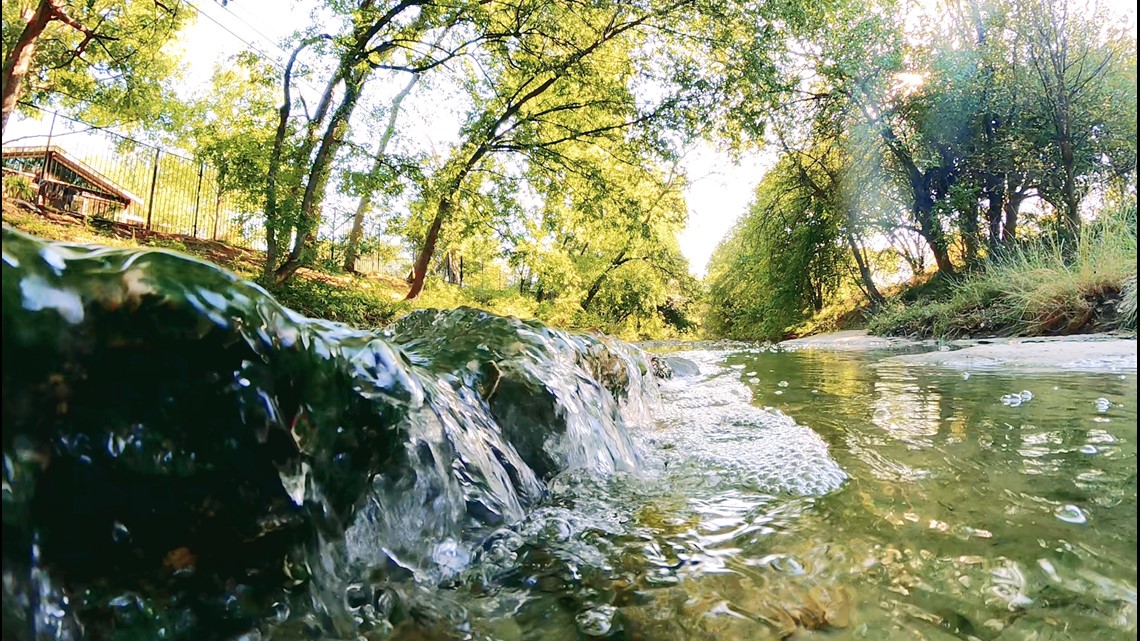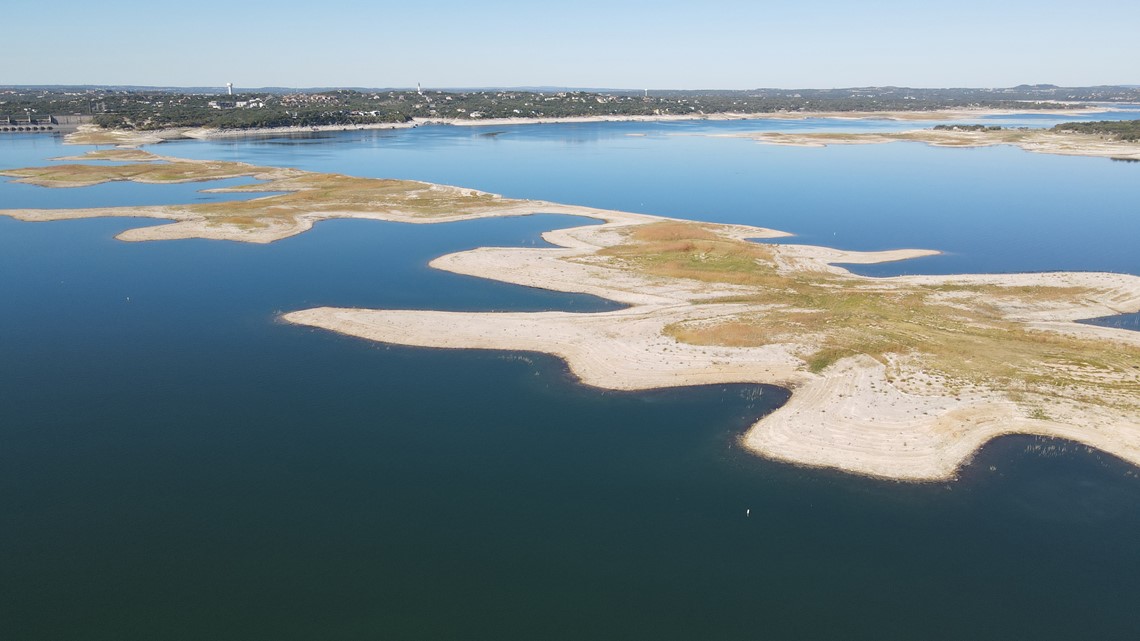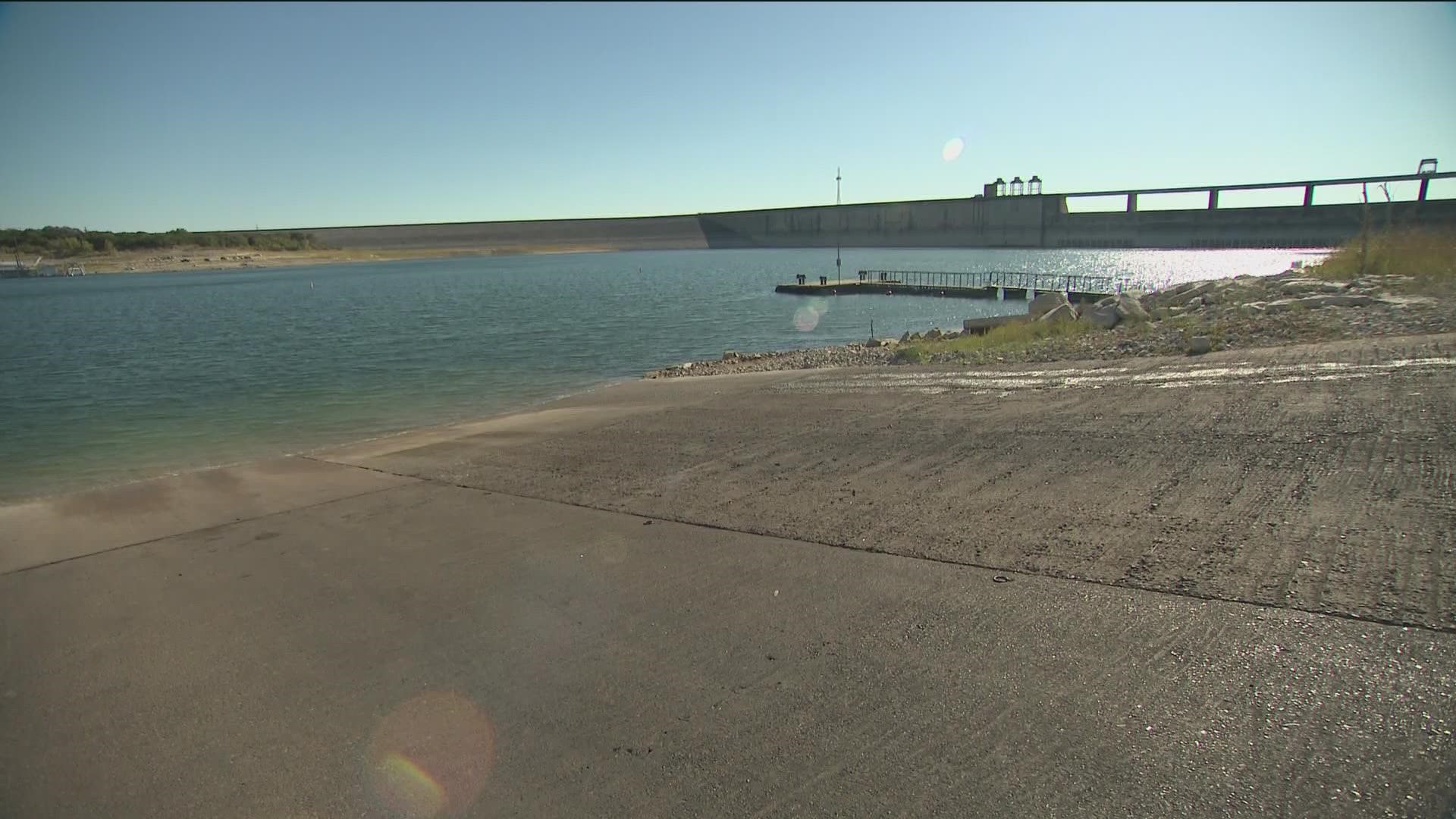AUSTIN, Texas — Having enough water for Austin's growing population is a huge concern.
Add the ongoing drought, record-breaking heat and aging infrastructure and you can see why water managers and conservationists are worried about the future.
The KVUE Defenders looked into what's being done so we don't run out of our most vital resource.
Water restrictions in Central Texas
Water is a resource that landscape architect Tait Moring values. That's why he promotes native plants.
Traditional yards in Central Texas take work.
"We have extremes. So it gets very hot and it also can get very cold … We've been in this drought now for a period of time," Moring said.
The current drought started in September of 2021, according to state climatologist John Nielson-Gammon. He also said Texas is experiencing the worst drought since 2011.
"The drought in 2022 was unusual because we had the second-hottest summer on record behind only 2011, and so that made the drought impacts worse and made the drought worse," Nielson-Gammon said.
During a drought, Nielson-Gammon said water demand goes up. At the same time, water levels in reservoirs and aquifers go down, triggering restrictions when levels get too low.
Several Central Texas communities are under water restrictions, like Hutto, Round Rock and Austin.
The capital city's leaders want to take it one step further with a proposed Irrigation and Landscape Ordinance for new homes. The City of Austin already has a similar ordinance for commercial properties.
Marisa Flores Gonzalez supervises Austin Water's resources team.
"We don't just want to go out there and tell people what to do," Gonzalez said.
She said the City is getting community feedback, asking what Austinites think about:
- Only allowing certain types of native plants and grass in yards
- Limiting the amount of grass in lawns
- Limiting the size of sprinkler systems
The city council is expected to take up the item next year. Moring already knows some won't like it.
"I think, as Texans, we don't like to be told what to do," Moring said.
But with landscaping accounting for 32% of residential water use in Austin, Gonzalez said conservation and other strategies are needed, especially when the population is only projected to grow.


Austin's Water Forward plan
Some of those strategies are already underway as part of the Water Forward plan, the city's 100-year program that addresses future water needs.
Gonzalez said they are in the process of updating the plan, which is set for completion in 2024.
One pilot project would store drinkable water underground. It's called Aquifer Storage and Recovery.
Austin Water is studying three possible sites in Travis, Bastrop and Lee counties.
"Their ability to store water, to hold water in large amounts and for us to be able to ensure that if we're injecting water into a naturally occurring aquifer where it could be safe from evaporation, that we're not losing that water due to movement of water in the underground aquifer," Gonzalez said.
The aquifer project isn't expected to be online until 2035.
Austin Water is also in the middle of rolling out smart meters across the city. Installation is expected to be finished in 2025. The My ATX Water program modernizes the water metering system. Its goal is to conserve water and save customers money.
The new technology even caught Hobbes the cat turning on the faucet for a late-night drink. It sent Hobbes' human companion an alert about a possible leak.
Another conservation effort underway is the purple pipe system, where neighborhoods, like the Mueller development, use reclaimed water for lawns. Reclaimed water is recycled from wastewater and treated for non-drinking use.
Easing dependence on Highland Lakes
But conservation is only part of the answer.
The Lower Colorado River Authority operates Lakes Buchanan, Inks, LBJ, Marble Falls, Travis and Austin, collectively known as the Highland Lakes.
DroneVUE reveals Lake Travis's receding shoreline during the ongoing drought.


As of early November, Lake Travis was around 47% full. Lake Buchanan was about 60% full. Both are the two major water supply reservoirs for Central Texas.
To help reduce water demand on the Highland Lakes, the LCRA is building its first new water supply reservoir in the lower Colorado River basin since the 1940s when Lake Travis was built.
The Arbuckle Reservoir in Wharton County is set to hold 40,000 acre-feet of water. To give you an idea of how much water that is, 1 acre-foot is enough water to cover an acre of land, or about the size of a football field, 1 foot deep. So the Arbuckle Reservoir can hold 40,000 times that amount.
Here's another way to think about this – 40,000 acre-feet is more water capacity than Lady Bird Lake, Lake Austin and Lake Marble Falls combined.
Because the reservoir can be refilled several times a year, LCRA officials estimate it will add up to about 90,000 acre-feet per year to the region’s water supply.
John Hofmann is the executive vice president of water at the LCRA.
"Because I manage water supply, I remain concerned all the time," Hofmann said.
When the Arbuckle Reservoir is finished, he said the LCRA will be able to store water downstream of the Highland Lakes, where the lower basin gets about twice as much annual rainfall compared to the upper basin. But seepage issues have delayed the project twice.
"When you start to see sand moving with the groundwater, you want to make sure that you deal with that so that you don't have any type of subsurface structural issues that could develop because of it," Hofmann said.
The KVUE Defenders first told you about the Arbuckle Reservoir in 2018. At the time, the project was budgeted for $250 million, with operations set to start in 2019. The now $419 million project is expected to be up and running in 2024.
According to the LCRA, water inflows into Lakes Travis and Buchanan this year are well below the levels during the drought period of 2008 to 2015, which concerns advocacy groups like Environmental Stewardship and Environment Texas.
Luke Metzger is the director of Environment Texas.
"Will we be able to meet the needs of residents here if we have another severe drought? You know, I worry. Will there be enough water to go around? It's very concerning," Metzger said.
Austin's growing demand for water
Population growth is another major factor affecting our water supply.
"[Population growth] is going to mean tremendous more demand for water. And right now, if you look at the state water plan, you know, we don't have enough water to meet all of those projected needs," Metzger said.
The Texas Water Development Board, set up in 1957 to help secure water supply and create the state's water plan, estimates the Lone Star State's population will go from 29.7 million in 2020 to 51.5 million in 2070 – an increase of 73%.
Matt Nelson is the deputy executive administrator of planning for the Texas Water Development Board.
"We're growing more than you think," Nelson said.
The Texas Water Plan also projects the state's municipal demands will start surpassing existing water supplies in 2030. Existing supplies estimates are based on drought of record conditions, like in 2011.
Nelson said the plan also shows unmet needs.
"There's a significant number of [agricultural] demands that can't be met under drought conditions, and that is the biggest unmet need in the plan," Nelson said.
Nelson said that's why the state's 16 water planning regions need to implement plans to tackle those needs.
The state's water plan currently does not consider climate change, but Nelson said that could soon change.
"We don't have climate model information that scales at the regional level that they can use yet. So we are looking we're working with John Neilson-Gammon and we've been meeting with them regularly … And we're looking at, for example, look how to project changes to evaporation, which is not a simple thing," Nelson said.
Aging water infrastructure
Jeremy Mazur with Texas 2036, a nonpartisan public policy think tank, reminds us of another factor affecting water supply: aging and deteriorating water systems.
"The state of our water supply and infrastructure is challenged at this time … We always assume you're going to turn on the tap and water is going to come out of the faucet. But we were all taught a brutal lesson a year-and-a-half ago of what life without water is like," Mazur said.
In February of 2021, Winter Storm Uri caused widespread water and power outages.
According to the City of Austin's after-action report, Austin Water staff made 381 water line repairs in a 10-day span.
"I'm aware of some water systems that have water loss losses upwards of 50% to 60%, which means that of all the water going into their system, only 40% to 50% of it makes it out to the other side to where people are waiting at the end of the tap," Mazur said.
The senior policy advisor also said the nonprofit's October voter poll showed most Texans approve of using some of the State's $27 billion budget surplus to fix the state's aging water systems.
They are in such bad shape, the American Society of Civil Engineers gave Texas a C-minus for our drinking water infrastructure and a D for our wastewater systems.
The good news is the Infrastructure and Jobs Act gives Texas more than $2 billion over the next five years to help fix our water infrastructure. But experts say some smaller communities don't know the state of their water systems and don't know about this federal funding.
In the meantime, Moring will keep recommending smaller lawns, smaller sprinkler systems and native plants.
"You want to avoid wasting water," Moring said.
Moring hopes those conservation efforts and water strategies will keep our water flowing.
PEOPLE ARE ALSO READING:

